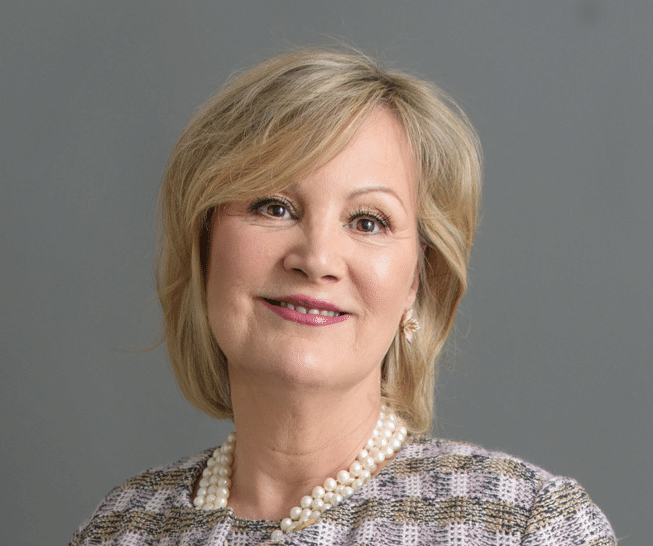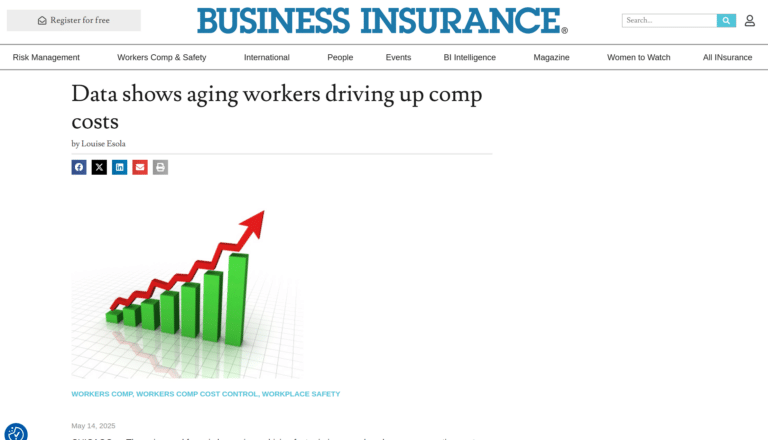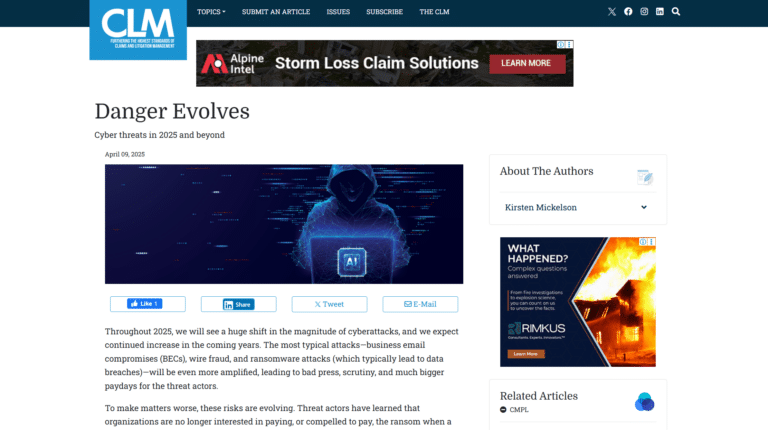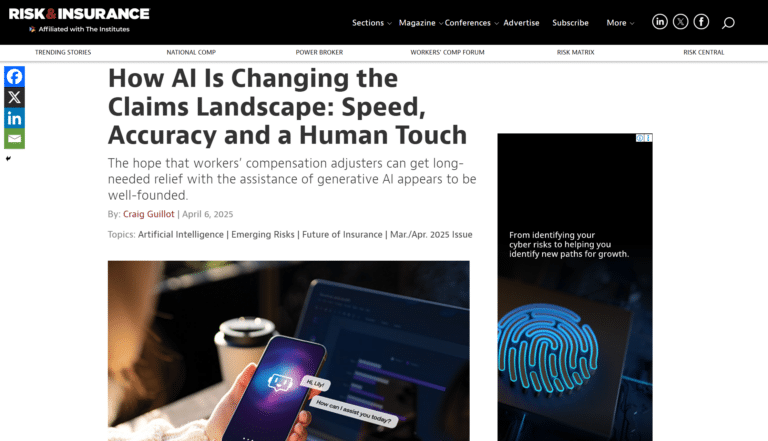After several years of industry turbulence in the post-pandemic landscape, the annual RIMS conference invites risk and insurance professionals far and wide to join in-depth sessions and thought–leadership seminars on the insights and solutions highlighting the path forward for the industry.
GB’s Risk Management team will be attending RIMS to host partners and drive meaningful discussions about the tools, capabilities, and expertise needed to build partnered solutions that drive quality and superior outcomes. Pam Ferrandino, VP – National Marketing Engagement, and Joe Zinga, SVP – Risk Management Sales, explore the defining opportunities for this year, what insights can be gained from RIMS, and how strategic partnerships can take your outcomes to the next level in 2023.
What are you most looking forward to at RIMS this year, and why do you think it is such an important event for risk professionals to attend?
Pam Ferrandino (PF): While I should start with all of the important risks to learn about at RIMS—honestly, RIMS to me is about people! It is an incredible event to connect with our clients, industry colleagues, and friends from around the globe. Each year we learn about and discuss current or emerging risks, and we also have the opportunity to both strengthen our industry relationships and build new ones. Trusted relationships can enhance the dialogue and communication of risks and emerging exposures while also allowing us, as professionals, to gain insights and provide better solutions.
Joe Zinga (JZ): I look forward to RIMS each year, as it provides a unique opportunity to meaningfully connect with a large number of clients, prospective clients, brokers, and other business partners in a very short period of time. I believe that a well-planned RIMS conference is the equivalent of eight to ten business trips. The conference enables an immense amount of positive energy, collaboration, and learning. Finally, I most enjoy spending quality face-to-face time together with longtime friends and colleagues.
What are a couple of key evolving risks in the marketplace that you think Risk Managers need to pay attention to?
PF: There has been a lot of discussion regarding PFAS or PFOA (per- and polyfluoroalkyl substances, which are also commonly referenced as “forever chemicals”). As hard as it may be to believe, there is growing concern that they could be the next asbestos. These chemicals are very stable, which makes them resistant to oxidation, biodegradation, or other methods to eradicate them, meaning that they can accumulate over time. Additionally, there have been studies linking exposure to PFAS to pregnancy complications and high cholesterol, as well as various cancers and other diseases. As expected, there is PFAS litigation, and these lawsuits range from personal injury-type claims to diminished property values to remediation costs for clean-up. Globally, carriers are considering and reviewing the potential application of exclusions. At Gallagher Bassett (GB), our specialty and technical resources continue to work with our clients as new exposures, risks, and claims emerge to help them achieve favorable outcomes.
JZ: There has been a flurry of recent dialogue around Florida tort reform and the anticipated long- and short-term impacts it will have on our industry, including:
- Statute of Limitations—The statute of limitations for negligence claims was reduced from four years to two years.
- Modified Comparative Negligence—Plaintiffs will be barred from recovering damages if they are found to be more than 50 percent at fault.
- Reasonable Limits on Medical Damages—Recoverable medical damages will be based on actual amounts paid or equivalent Medicare/Medicaid reimbursement rates, not the inflated billed amounts.
- Attorney Fees—Attorney fee recoveries will generally be limited to amounts based on reasonable hourly rates.
- Presumption in Favor of Property Owners—If a crime is committed by a third party, there is now a presumption that the property owner is not liable if the property owner has taken reasonable security measures.
The short-term or immediate impact of this has been a spike in new suits and policy limit demands by the plaintiffs’ bar to try to get ahead of the new law. As of this writing, we have seen estimates of between 100,000 and 250,000 new suits filed. However, the long-term impact of Florida tort reform is clearly good news for defendants.
With changes in how we work, and the challenges presented by shifting economic forces, are you seeing corresponding impacts or changes in how Risk Managers and Brokers leverage data insights in 2023?
JZ: Absolutely, and I look forward to seeing more of it. During the last ten years, the manner in which data is used has evolved tremendously, and Risk Managers should expect that their partners are leveraging that data to drive action and, in turn, superior results. This includes utilizing complexity-adjusted benchmarks to account for the volatility we have seen and separating the “signal from the noise” on a given program. Risk Managers should expect that partners can identify and act upon a handful of action-oriented recommendations versus delivering a sixty-page report that is unable to drive program improvement.
PF: Recently, a Retail Risk Manager told me: “Don’t tell me about my trends from five years ago, because following the pandemic, so much has changed!” She is right. Over the past three years, we have had so much change—from more remote employees to the downstream effects of the changes to how we get our weekly groceries. The post-pandemic impact has created regional residential shifts, real estate shifts (why rent a big office when no one works in it?), the number of daily commuters, and the clothes we wear during our working hours. These changes in consumer behavior have impacted demand on certain products. This change in demand cycles has impacted the manufacturing, transportation, construction, and healthcare sectors. Ultimately, these “disruptors in demand” have a significant impact on the supply chain—impacting our client’s corresponding risk profiles and critical data points or KPIs. While these trends may invalidate some of the usefulness of a company’s historical quarter-on-quarter trends, GB and their Broker are equipped to help them gain the needed insights to manage their risk by leveraging their data and providing them strategic insights based on their exposures today.
What do you see as the opportunities that Risk Managers and Brokers can leverage to build efficient, effective, and outcome-driven partnerships?
PF: Sometimes, it feels like growing concerns over AI or ChatGPT are trending headlines that create uncertainty. However, as a risk professional and an admitted quantitative geek, the improvements in claim outcomes due to the impact of machine learning that ultimately drives down the cost of our client’s retained risk continue to fascinate me.
The models that leverage machine learning are not built with the intention of replacing people but rather to allow our GB Nurses and Resolution Managers to leverage available real-time insights and information that, historically, could have taken days or weeks to achieve. This also allows for faster, more strategic decision-making on a consistent basis. To this end, the impact of machine learning on the medical management of a claim is surprisingly still underutilized. However, we are seeing that when early adopters embrace the opportunities that an integrated machine learning-augmented medical claims management can create, they are seeing some of the best outcomes. While it may be overwhelming to distill fact from fiction in this area, the math does not lie! The continuous evolution of this segment of claims management, in my opinion, is one of the biggest opportunities for risk management programs.
JZ: The RIMS conference allows Risk Managers to ask questions and gather information from a wide array of industry experts that can be leveraged to drive improvements in their respective programs. The focus of this dialogue can vary from practices utilized that empower front-line claim professionals to emerging technologies to how we empower our clients to bring program enhancements and a reduction in TCOR into conversations with their respective markets and the broader impact these results have on their bottom line.
When I look at our highest-performing programs, they are invariably driven by a collaborative partnership between the client, broker, and GB—all focused on an agreed-upon set of goals. Successful partnerships allow for healthy dialogue, including respectfully challenging each other on new or creative ways to improve program results. The team then works together to execute against those initiatives and regularly monitors the impact on the program as a whole. Our experience is that the Risk Managers that focus on the TCOR and bigger picture program results achieve a superior result.
Meet the GB experts, including Pam Ferrandino and Joe Zinga, at RIMS at booth #1927, or contact the team today to learn how a strategic partnership can help you get ahead in 2023.






